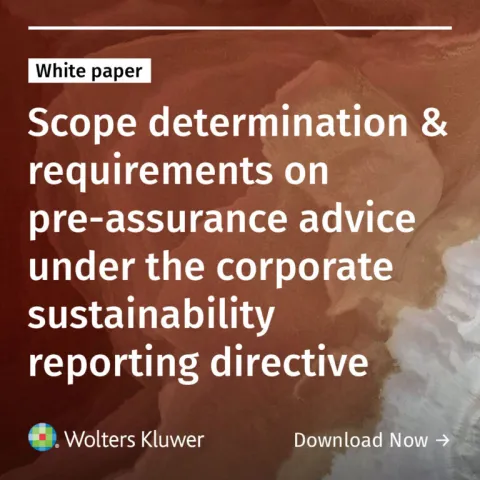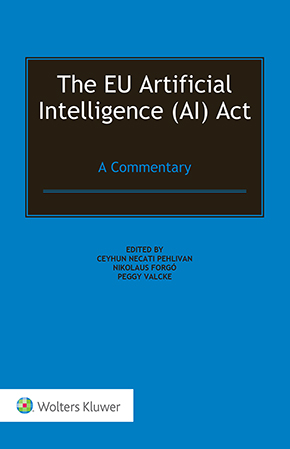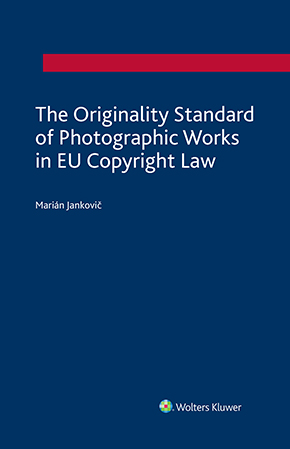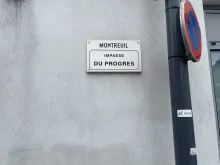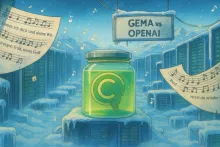Why the Copyright Statute Is Not Enough: How the Restatement Relies on Both Statute and Caselaw to Clarify U.S. Copyright Law
August 11, 2025
In a previous blog post, we explained how the Restatement of the Law, Copyright was prepared, how it is structured, and how it was approved as of May by the membership of the American Law Institute (ALI) (with the final sections approved by voice vote with no dissenting votes heard).
The Restatement aims to clarify existing U.S. copyright law as Congress has enacted it and courts have applied and interpreted it. A question we have frequently encountered is: why have a Restatement when we have a statute? Isn’t the 1976 Copyright Act the “law” of copyright?
The answer, as any experienced practitioner or judge knows, is that while the statute provides the foundation and resolves many issues, it alone does not provide a complete understanding of copyright law. Much of what a lawyer needs in order to understand and apply copyright law is found not within the four corners of Title 17, but in the extensive and growing body of judicial interpretation. In many of the most important areas of copyright doctrine—such as the threshold for originality or the requirements for proving infringement—courts have developed essential rules, doctrines, and distinctions not set out in the statutory text. The Restatement draws on both sources: it starts with the statute, but where the statute is silent, incomplete, or ambiguous, it relies on the case law (and the same legislative and administrative materials that cases rely on) to restate what the law is. In this post, we discuss two examples of how the Restatement draws on the case law necessary to understand and operationalize the provisions of the statute: the requirement that a work be “original” in order to be protected by copyright, and the structure of a copyright owner’s prima facie claim for copyright infringement.
A Leading Example: The Originality Requirement
Section 102(a) of the Copyright Act states that copyright protects “original works of authorship.” But the Act neither defines “original” nor specifies the degree of originality a work must embody. A crucial elaboration was provided by the U.S. Supreme Court in Feist Publications, Inc. v. Rural Telephone Service Co. (1991), where the Court held that originality requires independent creation and “at least some minimal degree of creativity.” This principle, while foundational, is expressed nowhere in the statute. Section 5 of the Restatement sets forth the basic principle articulated by the Supreme Court that to be original a work must both be “independently created by its author” and “embody expression that is at least minimally creative.”
Section 7 of the Restatement then explores in more detail the minimal-creativity requirement. Section 7(a) states that “[a] work meets the minimal-creativity criterion for originality if the work embodies expression that is at least minimally creative.” Section 7(b) explains that this requirement “can be satisfied by an author’s creative choices.” That section goes on to elaborate that in the case of a compilation, “choices regarding the selection, coordination, or arrangement of elements can satisfy the minimal-creativity requirement.” For example, as an illustration in § 7’s comments elaborates, the selection and arrangement of content in a student guide to nursing schools—choosing which resources to highlight and which information to feature in each topic—can reflect at least minimal creativity and thus satisfy the originality standard. By contrast, as another illustration in § 7 shows, an alphabetical list of names and addresses, no matter how much effort went into compiling the list, does not meet the threshold for originality if it simply reproduces factual information in a routine and expected way.
The Restatement includes illustrations drawn from real-world scenarios and case law. Where possible, multiple illustrations work together, as the ALI explains, “as ‘bookends’ that demonstrate fact patterns in which the rule or principle at issue either clearly applies or clearly does not.” For example, two illustrations in § 7 show that a photograph of a painting executed to reproduce the image as faithfully and exactly as possible would not be minimally creative but that a photograph of a sculpture, requiring creative decisions about angle, lighting, and presentation, would be. Similarly, another pair of illustrations explains that painting the words “The chef” onto a canvas in the shape of a chef’s hat might be original as a graphic work, but merely typing the same words on a blank page is not an original literary work. These examples reflect the kinds of subtle distinctions that courts have developed to operationalize the statute’s originality requirement and the Supreme Court’s “minimal degree of creativity” standard—distinctions essential to understanding or practicing copyright law, but nowhere mentioned in the statute.
Infringement and the Role of “Copying in Fact”
Another critical area where the statute is silent is the structure of a copyright infringement claim. Section 501 of the Copyright Act merely states that “[a]nyone who violates any of the exclusive rights of the copyright owner . . . is an infringer of the copyright.” Nowhere does the Act set out the elements that a plaintiff must actually prove to prevail on a claim of infringement. Over time, courts have developed a widely accepted framework: to prove infringement, a plaintiff must show (1) ownership of a valid copyright and (2) copying of protected expression from the plaintiff’s work.
But those elements contain layers that courts have had to unpack, particularly the second element of “copying of protected expression.” Section 58 of the Restatement, which lays out a roadmap of the elements of the prima facie infringement claim, states that proving “copying of protected expression” requires a plaintiff to prove both “copying in fact” and “improper appropriation.” In § 60, the Restatement explains that proving “copying in fact” means that the plaintiff must show that the defendant actually used material from the plaintiff’s work, as opposed to independently creating something similar. Importantly, this is distinct from proving “improper appropriation,” a question that, as § 61 explains, focuses on whether the defendant copied enough protectable expression to constitute infringement.
This two-part structure—copying in fact and improper appropriation—is widely used in case law but entirely absent from the text of the statute. The statutory rights (such as the reproduction right in § 106(1) or the public performance right in § 106(4)) tell us which rights are protected, but not what counts as “copying” for purposes of establishing infringement liability. With respect to “copying in fact,” the Restatement’s black letter and accompanying comments in § 60 describe both direct and circumstantial methods of proving copying in fact and describe in detail the approaches that courts have developed across decades. (Section 61 does the same for improper appropriation, describing the principles that courts have developed across a range of cases to separate infringing from non-infringing appropriation.)
Consider the example of proving copying in fact by circumstantial evidence. Because direct evidence of copying is rare (defendants rarely admit to copying, and surveillance footage is not usually available), courts have allowed plaintiffs to prove copying in fact through circumstantial rather than direct evidence—typically through a combination of evidence of access to the copyrighted work and similarity between the plaintiff’s and defendant’s works. Courts often refer to the similarity necessary to show copying in fact as “probative similarity,” to distinguish it from the “substantial similarity” required to prove improper appropriation. The Copyright Act makes no mention of either term, or of the use of circumstantial evidence to prove copying. The Restatement sets forth and discusses all of these terms and concepts drawn from the deep body of caselaw.
The statute also gives no indication of the distinction between showing that a defendant’s work has similarities to protected elements of a plaintiff’s work as opposed to unprotected elements of that work. But the Restatement recognizes that this distinction is crucial. Section 60 explains that a plaintiff who shows that a defendant had access to a work and produced something sufficiently similar to the unprotected elements in the plaintiff’s work can persuade a court that copying in fact occurred, even if that copying is not yet shown to be sufficient to constitute infringement. For example, if an allegedly infringing phone directory includes fictitious phone numbers contained in the plaintiff’s copyrighted directory, that similarity alone might support an inference of copying in fact, but it does not establish improper appropriation, because fictitious phone numbers standing alone are not protectable.
Section 60 also explains how courts handle situations in which a plaintiff cannot clearly establish that the defendant had access to the plaintiff’s work. Courts allow a plaintiff to prove copying in fact through “striking similarity,” where the works are so similar that there is no reasonable explanation for the similarity other than copying. Again, the statute says nothing about this. But courts have developed detailed doctrines to allow such an inference and to clarify its limits. For example, as one of the illustrations in § 60 explains, if a complex abstract painting (that is unlike anything that came before it) and a subsequently produced fabric design are virtually indistinguishable, that similarity (which is too unlikely to be coincidence) would be enough to allow a court to infer that the fabric design was copied from the painting, even without any other evidence that the fabric designer had access to the painting. By contrast, as another illustration explains, in a case involving nearly identical photographs of an iceberg taken by two photographers on the same cruise ship, the similarity may be extremely strong, but the evidence might show that each photographer independently captured the same scene at the same moment—rebutting the inference of copying that arose from the similarity of the photos.
Statute and Caselaw Together
None of this rich doctrinal detail is available from reading the Copyright Act alone. The statute doesn’t define how similar two works must be to support an inference of copying, or how that similarity interacts with originality, independent creation, or subconscious copying. Yet all these issues are central to how US copyright law functions in practice.
That is why the Restatement incorporates both the statute and the case law. The Restatement focuses primarily on the language of the Act where it provides clear rules. But where courts have developed elaborations and explanations—as they have in the important areas of originality and infringement, along with many other issues in copyright law—the Restatement covers those doctrines too, reflecting their real role in the law.
In this way, the Restatement does not merely restate the statute. It restates the law. That law includes the statute, but also the judicial doctrines that interpret the ambiguities in the statute and fill the many gaps the statute leaves. Our hope is that by organizing and clarifying these doctrines in one place, the Restatement can make copyright law more transparent, more predictable, and more useful to those who rely on it.
You may also like



